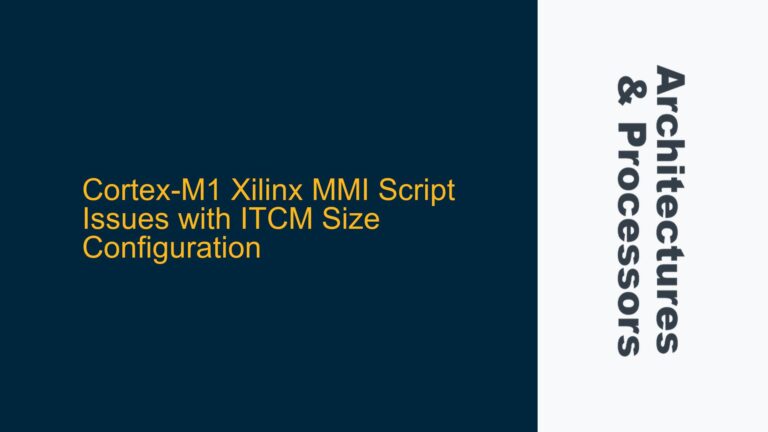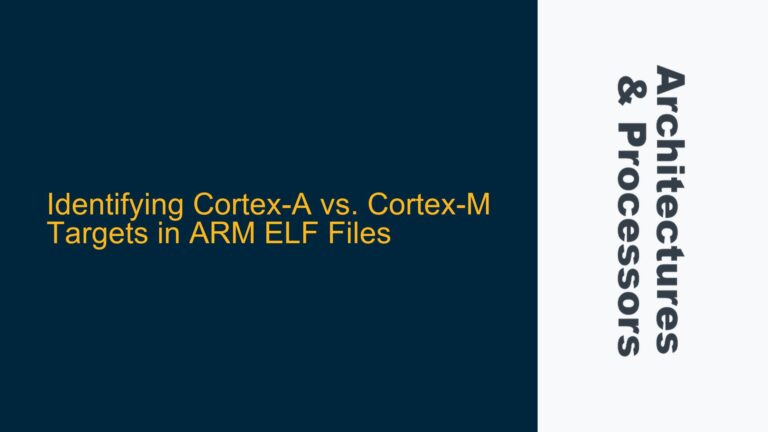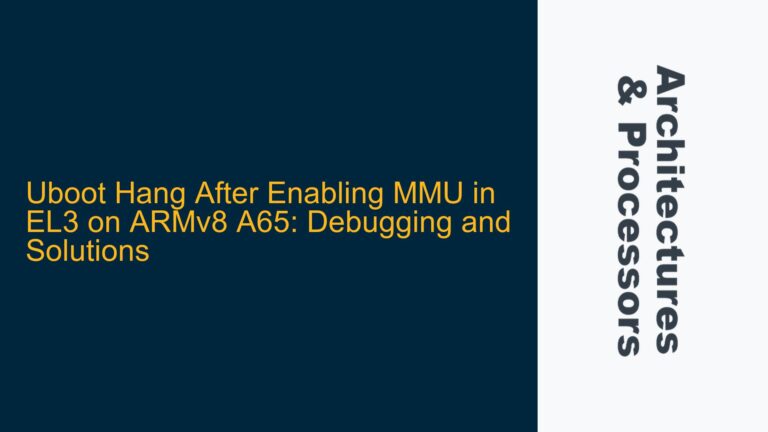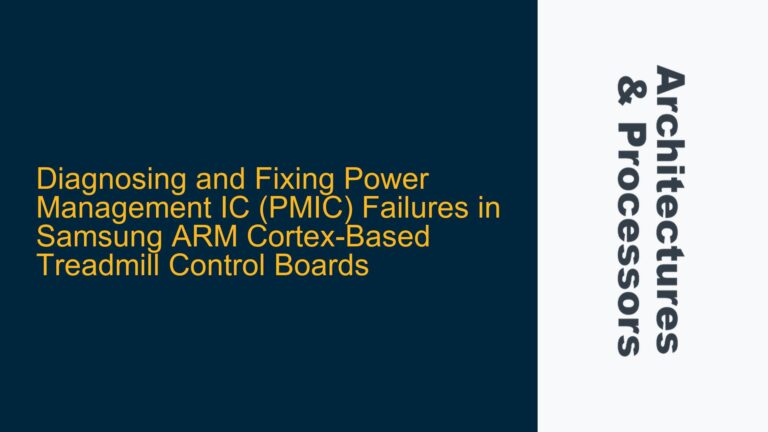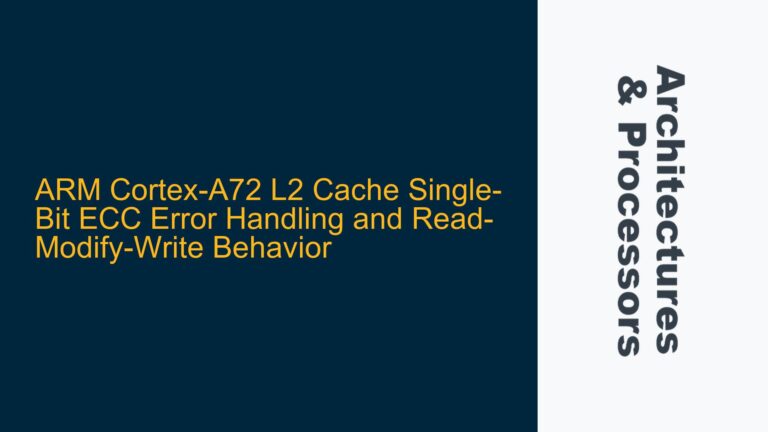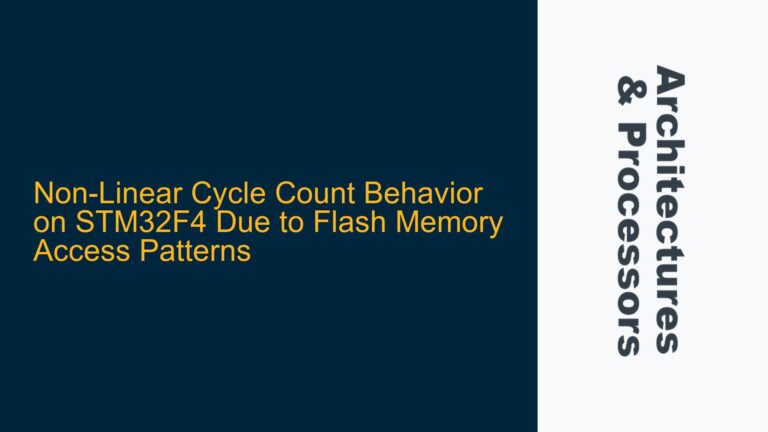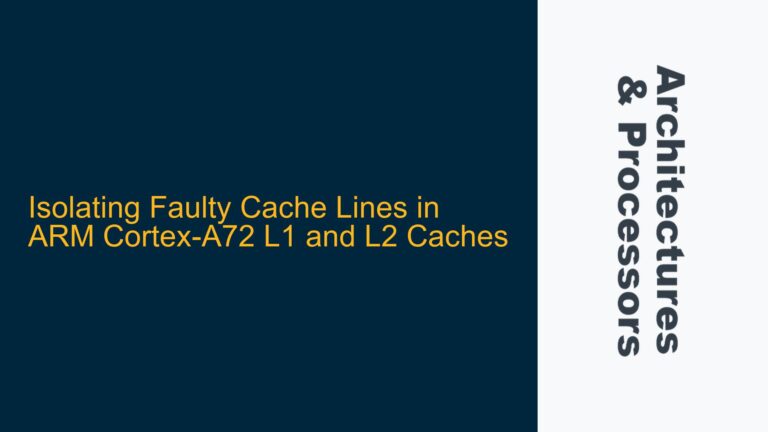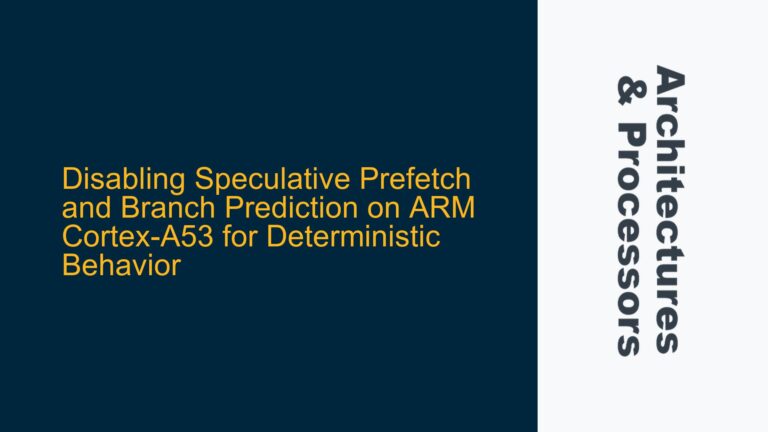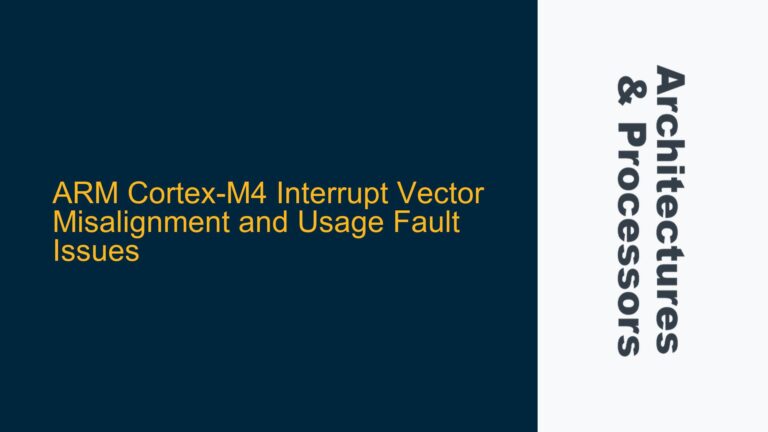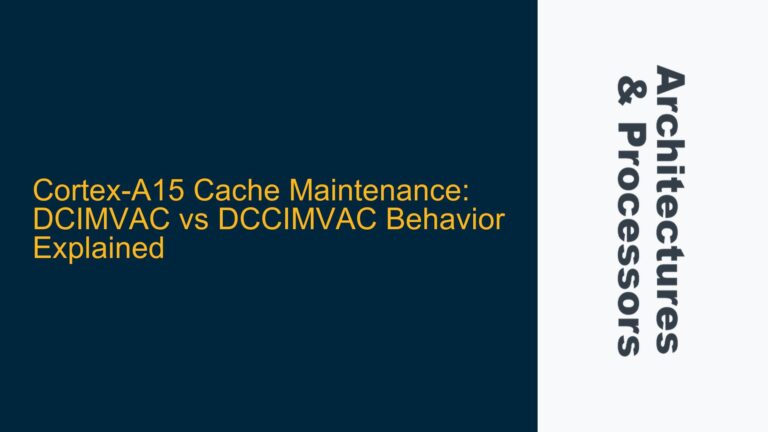Cortex-M1 Xilinx MMI Script Issues with ITCM Size Configuration
ARM Cortex-M1 MMI Script Fails for ITCM Sizes Greater Than 16kB The core issue revolves around the make_mmi_file.tcl script provided in the ARM Design Start Xilinx pack, which is used to generate Memory Map Information (MMI) files for Cortex-M1 systems implemented on Xilinx FPGAs. The script appears to function correctly for ITCM (Instruction Tightly Coupled…
